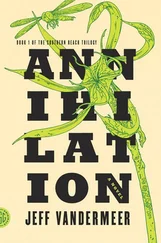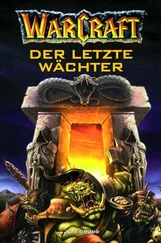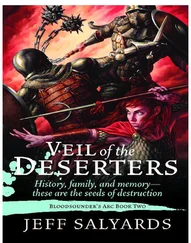Jeff Molofee - NeHe's OpenGL Tutorials
Здесь есть возможность читать онлайн «Jeff Molofee - NeHe's OpenGL Tutorials» весь текст электронной книги совершенно бесплатно (целиком полную версию без сокращений). В некоторых случаях можно слушать аудио, скачать через торрент в формате fb2 и присутствует краткое содержание. Жанр: Программирование, на английском языке. Описание произведения, (предисловие) а так же отзывы посетителей доступны на портале библиотеки ЛибКат.
- Название:NeHe's OpenGL Tutorials
- Автор:
- Жанр:
- Год:неизвестен
- ISBN:нет данных
- Рейтинг книги:3 / 5. Голосов: 1
-
Избранное:Добавить в избранное
- Отзывы:
-
Ваша оценка:
- 60
- 1
- 2
- 3
- 4
- 5
NeHe's OpenGL Tutorials: краткое содержание, описание и аннотация
Предлагаем к чтению аннотацию, описание, краткое содержание или предисловие (зависит от того, что написал сам автор книги «NeHe's OpenGL Tutorials»). Если вы не нашли необходимую информацию о книге — напишите в комментариях, мы постараемся отыскать её.
NeHe's OpenGL Tutorials — читать онлайн бесплатно полную книгу (весь текст) целиком
Ниже представлен текст книги, разбитый по страницам. Система сохранения места последней прочитанной страницы, позволяет с удобством читать онлайн бесплатно книгу «NeHe's OpenGL Tutorials», без необходимости каждый раз заново искать на чём Вы остановились. Поставьте закладку, и сможете в любой момент перейти на страницу, на которой закончили чтение.
Интервал:
Закладка:
if (!CreateGLWindow("NeHe's Color Tutorial",640,480,16,fullscreen)) {
return 0; // Quit If Window Was Not Created
}
}
In this tutorial I have tried to explain in as much detail, how to add flat and smooth coloring to your OpenGL polygons. Play around with the code, try changing the red, green and blue values to different numbers. See what colors you can come up with. If you have comments or questions please email me. If you feel I have incorrectly commented something or that the code could be done better in some sections, please let me know. I want to make the best OpenGL tutorials I can. I'm interested in hearing your feedback.
Jeff Molofee (NeHe)* DOWNLOAD Visual C++Code For This Lesson.
* DOWNLOAD ASMCode For This Lesson. (Conversion by Foolman)
* DOWNLOAD Borland C++ Builder 5.0Code For This Lesson. (Conversion by Neil Flynn)
* DOWNLOAD Code Warrior 5Code For This Lesson. (Conversion by Scott Lupton)
* DOWNLOAD CygwinCode For This Lesson. (Conversion by Stephan Ferraro)
* DOWNLOAD DelphiCode For This Lesson. (Conversion by Peter De Jaegher)
* DOWNLOAD Game GLUTCode For This Lesson. (Conversion by Milikas Anastasios)
* DOWNLOAD GLUTCode For This Lesson. (Conversion by Andy Restad)
* DOWNLOAD IrixCode For This Lesson. (Conversion by Lakmal Gunasekara)
* DOWNLOAD JavaCode For This Lesson. (Conversion by Jeff Kirby)
* DOWNLOAD Jedi-SDLCode For This Lesson. (Conversion by Dominique Louis)
* DOWNLOAD LinuxCode For This Lesson. (Conversion by Richard Campbell)
* DOWNLOAD Linux/GLXCode For This Lesson. (Conversion by Mihael Vrbanec)
* DOWNLOAD Linux/SDLCode For This Lesson. (Conversion by Ti Leggett)
* DOWNLOAD Mac OSCode For This Lesson. (Conversion by Anthony Parker)
* DOWNLOAD Mac OS X/CocoaCode For This Lesson. (Conversion by Bryan Blackburn)
* DOWNLOAD MASMCode For This Lesson. (Conversion by Nico (Scalp))
* DOWNLOAD Power BasicCode For This Lesson. (Conversion by Angus Law)
* DOWNLOAD PythonCode For This Lesson. (Conversion by John)
* DOWNLOAD SolarisCode For This Lesson. (Conversion by Lakmal Gunasekara)
* DOWNLOAD Visual BasicCode For This Lesson. (Conversion by Ross Dawson)
* DOWNLOAD Visual FortranCode For This Lesson. (Conversion by Jean-Philippe Perois)
Lesson 04
In the last tutorial I taught you how to add color to triangles and quads. In this tutorial I will teach you how to rotate these colored objects around an axis.
Using the code from the last tutorial, we will be adding to a few places in the code. I will rewrite the entire section of code below so it's easy for you to figure out what's been added, and what needs to be replaced.
We'll start off by adding the two variables to keep track of the rotation for each object. We do this at the top of our program, underneath the other variables. You will notice two new lines after 'bool fullscreen=TRUE;'. These lines set up two floating point variables that we can use to spin the objects with very fine accuracy. Floating point allows decimal numbers. Meaning we're not stuck using 1, 2, 3 for the angle, we can use 1.1, 1.7, 2.3, or even 1.015 for fine accuracy. You will find that floating point numbers are essential to OpenGL programming. The new variables are called rtri which will rotate the triangle and rquad which will rotate the quad.
#include // Header File For Windows
#include // Header File For The OpenGL32 Library
#include // Header File For The GLu32 Library
#include // Header File For The GLaux Library
HDC hDC=NULL; // Private GDI Device Context
HGLRC hRC=NULL; // Permanent Rendering Context
HWND hWnd=NULL; // Holds Our Window Handle
HINSTANCE hInstance; // Holds The Instance Of The Application
bool keys[256]; // Array Used For The Keyboard Routine
bool active=TRUE; // Window Active Flag
bool fullscreen=TRUE; // Fullscreen Flag Set To TRUE By Default
GLfloat rtri; // Angle For The Triangle ( NEW )
GLfloat rquad; // Angle For The Quad ( NEW )
Now we need to modify the DrawGLScene() code. I will rewrite the entire procedure. This should make it easier for you to see what changes I have made to the original code. I'll explain why lines have been modified, and what exactly it is that the new lines do. The next section of code is exactly the same as in the last tutorial.
int DrawGLScene(GLvoid) // Here's Where We Do All The Drawing
{
glClear(GL_COLOR_BUFFER_BIT | GL_DEPTH_BUFFER_BIT); // Clear The Screen And The Depth Buffer
glLoadIdentity(); // Reset The View
glTranslatef(-1.5f,0.0f,-6.0f); // Move Into The Screen And Left
The next line of code is new. glRotatef(Angle,Xvector,Yvector,Zvector) is responsible for rotating the object around an axis. You will get alot of use out of this command. Angle is some number (usually stored in a variable) that represents how much you would like to spin the object. Xvector, Yvector and Zvector parameters together represent the vector about which the rotation will occur. If you use values (1,0,0), you are describing a vector which travels in a direction of 1 unit along the x axis towards the right. Values (-1,0,0) describes a vector that travels in a direction of 1 unit along the x axis, but this time towards the left.
D. Michael Traub: has supplied the above explanation of the Xvector, Yvector and Zvector parameters.
To better understand X, Y and Z rotation I'll explain using examples…
X Axis – You're working on a table saw. The bar going through the center of the blade runs left to right (just like the x axis in OpenGL). The sharp teeth spin around the x axis (bar running through the center of the blade), and appear to be cutting towards or away from you depending on which way the blade is being spun. When we spin something on the x axis in OpenGL it will spin the same way.
Y Axis – Imagine that you are standing in the middle of a field. There is a huge tornado coming straight at you. The center of a tornado runs from the sky to the ground (up and down, just like the y axis in OpenGL). The dirt and debris in the tornado spins around the y axis (center of the tornado) from left to right or right to left. When you spin something on the y axis in OpenGL it will spin the same way.
Z Axis – You are looking at the front of a fan. The center of the fan points towards you and away from you (just like the z axis in OpenGL). The blades of the fan spin around the z axis (center of the fan) in a clockwise or counterclockwise direction. When You spin something on the z axis in OpenGL it will spin the same way.
So in the following line of code, if rtri was equal to 7, we would spin 7 on the Y axis (left to right). You can try experimenting with the code. Change the 0.0f's to 1.0f's, and the 1.0f to a 0.0f to spin the triangle on the X and Y axes at the same time.
It's important to note that rotations are done in degrees. If rtri had a value of 10, we would be rotating 10 degrees on the y-axis.
glRotatef(rtri,0.0f,1.0f,0.0f); // Rotate The Triangle On The Y axis ( NEW )
The next section of code has not changed. It draws a colorful smooth blended triangle. The triangle will be drawn on the left side of the screen, and will be rotated on it's Y axis causing it to spin left to right.
glBegin(GL_TRIANGLES); // Start Drawing A Triangle
glColor3f(1.0f,0.0f,0.0f); // Set Top Point Of Triangle To Red
glVertex3f( 0.0f, 1.0f, 0.0f); // First Point Of The Triangle
Интервал:
Закладка:
Похожие книги на «NeHe's OpenGL Tutorials»
Представляем Вашему вниманию похожие книги на «NeHe's OpenGL Tutorials» списком для выбора. Мы отобрали схожую по названию и смыслу литературу в надежде предоставить читателям больше вариантов отыскать новые, интересные, ещё непрочитанные произведения.
Обсуждение, отзывы о книге «NeHe's OpenGL Tutorials» и просто собственные мнения читателей. Оставьте ваши комментарии, напишите, что Вы думаете о произведении, его смысле или главных героях. Укажите что конкретно понравилось, а что нет, и почему Вы так считаете.








